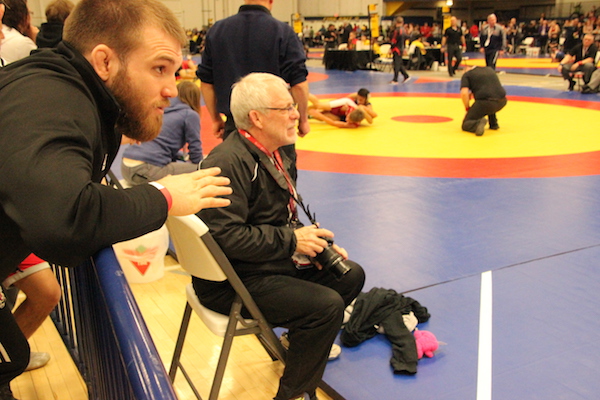Monday June 26th 2017
As preparations for the upcoming Canada Games approaches this summer, I recently got into a conversation with a colleague from work. Discussions centred on the Canada Games and how her son had made the Quebec team for baseball. As I congratulated her and said that I would meet her son in Winnipeg this summer, we got into a discussion about coaches and coaching methods.
The conversation centred on what is an acceptable level to push a young athlete. We’ve all seen movies in which the plot is almost formulaic when it comes to athletes being pushed by coaches. Some movies portray coaches as a silent mentor who can almost will their athlete to succeed. This figure can be kind, nurturing, wise and maybe a little eccentric. Pat Morita’s portrayal of Mr Miyagi from the 1984 film “The Karate Kid” springs to mind. The other end of the spectrum is the “hard as nails” coach which either serves as the antagonist or a tragic protagonist figure. While this almost archetypal figure has been portrayed quite a bit in movies, the actor that I feel best embodies this gruff type of coach would be Samuel Jackson’s portrayal of Coach Carter from the film of the same name. While this definitely makes for some compelling viewing, the answer itself is much more complex.


Mr Miyagi (image property of Wikipedia.com) Coach Carter (image property of Twitter.com)
Coaches need to push their athletes based on their realistic achievable goals. Athletes are destined for different athletic destinies and while through careful nurturing and development, you might be able to get them a little farther then they could otherwise, as the saying goes: “You can’t wring blood from a stone”.
Pushing an athlete can be tricky. Not pushing them hard enough may never allow them to achieve their full potential. On the other hand, pushing them too hard may cause them to become discouraged and may eventually lead them to leaving the sport. I’ve heard some horror stories in other sports and in our own sport of the latter happening and it usually involves a situation where there are a lot of athletes available. In other words, athletic teams become like factories and their job is to basically churn out the strongest team they can no matter the cost. For the athletes on the periphery, this can mean that they might be pushed harder they can handle in order to either get the most from them or to make way for other athletes who can handle the intensity. Athletes who are stronger may be able to handle the intensity or will be given preferential treatment in order to insure the success of the team. And sometimes, those star athletes are pushed even harder than the rest.

Some tense moments in the corner
It should be noted that some of the most successful coaches in sports have been almost tyrannical from time to time. The legendary Scotty Bowman was said to have reduced grown men to tears while Sir Alex Ferguson’s “hair dryer” treatment was notorious amongst his players. Sometimes as athletes’ progress to the higher levels of competition, the holding of their hands becomes less and is sometimes replaced by a swift kick in the behind.
This is not done just for the sake of doing something different; there is solid reasoning behind this. The adjustment that has to be made at moments notice in high performance sports can happen so quickly and it often takes a swift, decisive and sometimes aggressive approach to make that adjustment. What this may mean is that for younger athletes who desire to progress to the higher levels of sport, a firmer hand may be needed sooner rather than later in order to get them used to what may be expected of them in the future. In other words, I think that pushing an athlete hard may be a way of toughening them up, and prepare them for the future rigours of high-performance sport. As always, the ability to adapt and configure the level of intensity is different from athlete to athlete and good coaches will be able to make those adjustments.
To sum up, this is a topic that has too many different answers and opinions. As such I can only provide my opinion based on what I’ve seen throughout the years. Many people may disagree with me outright and that is their right to do so. We as coaches push our athletes hard because we want them to succeed and that we sometimes see so much potential in them. In the end, if the athlete does progress and if most of your athletes do achieve their athletic goals, then you can say that you pushed them at just the right amount and that hopefully, they’re better off for it.
